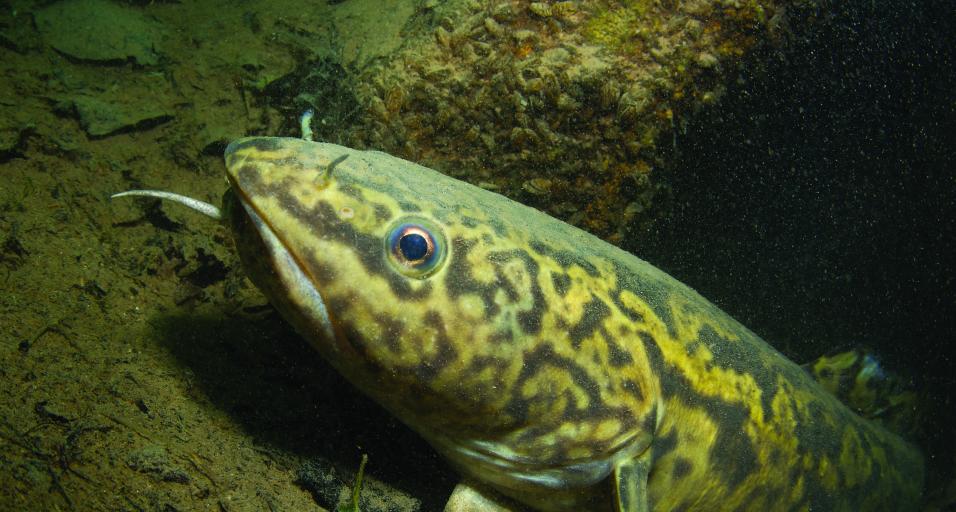Flaming Gorge Reservoir in southwest Wyoming is one of the most popular fisheries in the state and the West. Anglers come from near and far to pursue lake trout, along with other trout and kokanee salmon, at Wyoming’s largest reservoir which also runs into Utah.
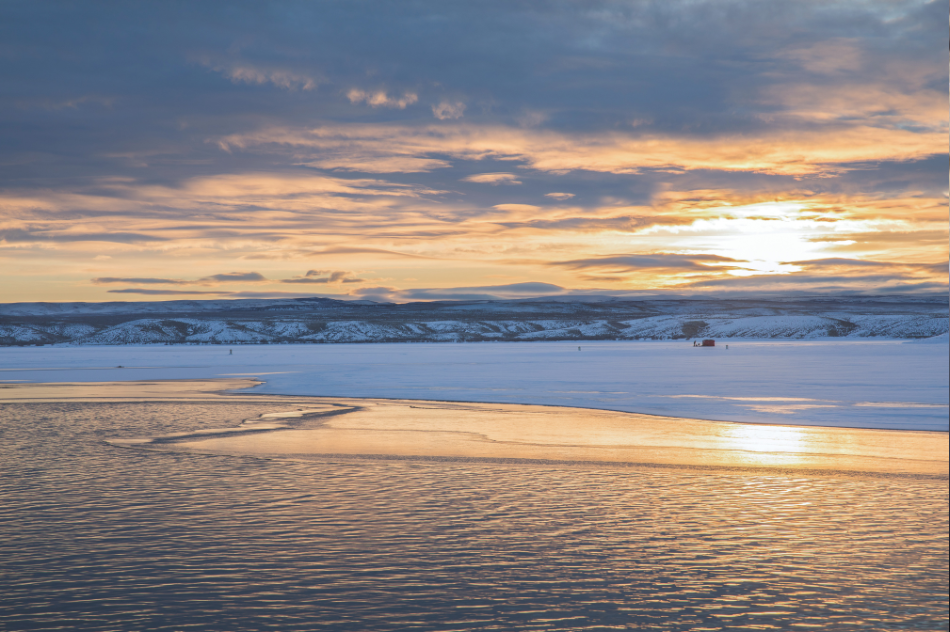
Flaming Gorge Reservoir is a popular destination for anglers throughout the year. (Photo by Patrick Owen/WGFD)
However, there is one fish that isn’t welcome in Flaming Gorge — burbot. This species was illegally put in the Green River drainage more than 20 years ago, and the first documented recording of burbot in Flaming Gorge by the Wyoming Game and Fish Department was in 2006. That year Game and Fish put regulations in place to begin the long process of reducing burbot in the reservoir. Since 2014, any burbot caught at Flaming Gorge must be killed. This regulation also includes all waters in Area 4 of the Game and Fish’s fishing regulations in Carbon, Lincoln, Sublette, Sweetwater and Uinta counties.
Why such a fuss over burbot?
“Burbot are an aggressive predator foraging on almost everything they encounter, including fish,” said Robb Keith, Game and Fish fisheries supervisor in the Green River Region who retired in March after 30 years with the department. “Their large mouths allow them to prey on fish up to half their total length. This is significant when you consider burbot more than 40 inches long have been caught in the Green River drainage. Biologists have handled burbot larger than 30 inches with kokanee 15-16 inches long in their stomachs.
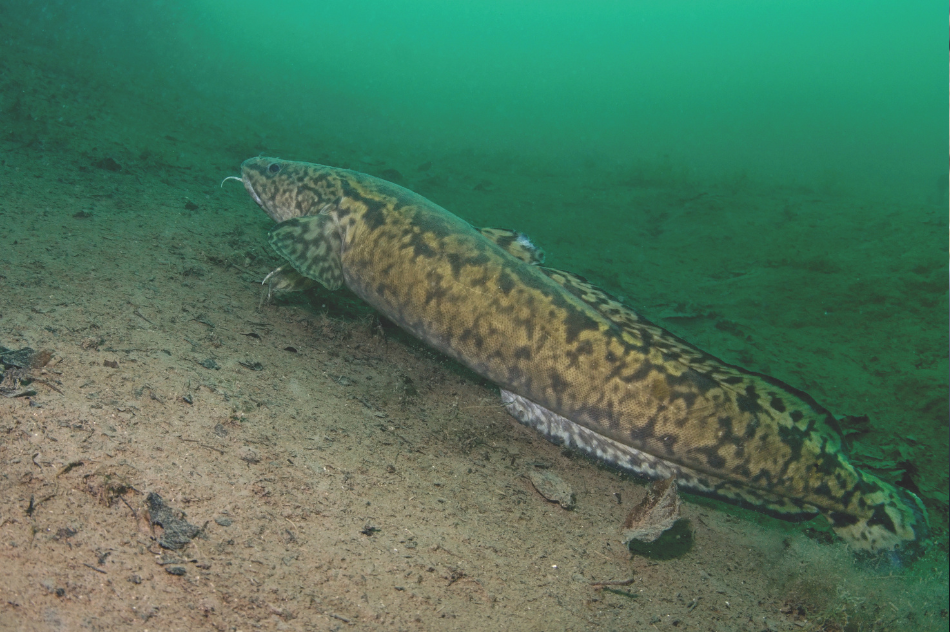
Burbot are aggressive feeders, which makes them vulnerable to hook-and-line angling. (Viktor Vrbovsky/Engbretson Underwater Photography)
“Their aggressive feeding behavior is their Achilles heel. They are extremely vulnerable to hook-and-line angling, and overharvest is one reason populations are declining and struggling to persist in their native range, which in Wyoming is east of the Continental Divide.”
Communities rallied around these efforts, and in 2010 the first fishing derby specifically targeting burbot at Flaming Gorge was held. In 2011, the first Burbot Bash took place at the reservoir, and it has occurred every year except 2015 due to poor ice conditions. A similar event started in 2016 at Fontenelle Reservoir near Kemmerer where burbot also were illegally introduced.
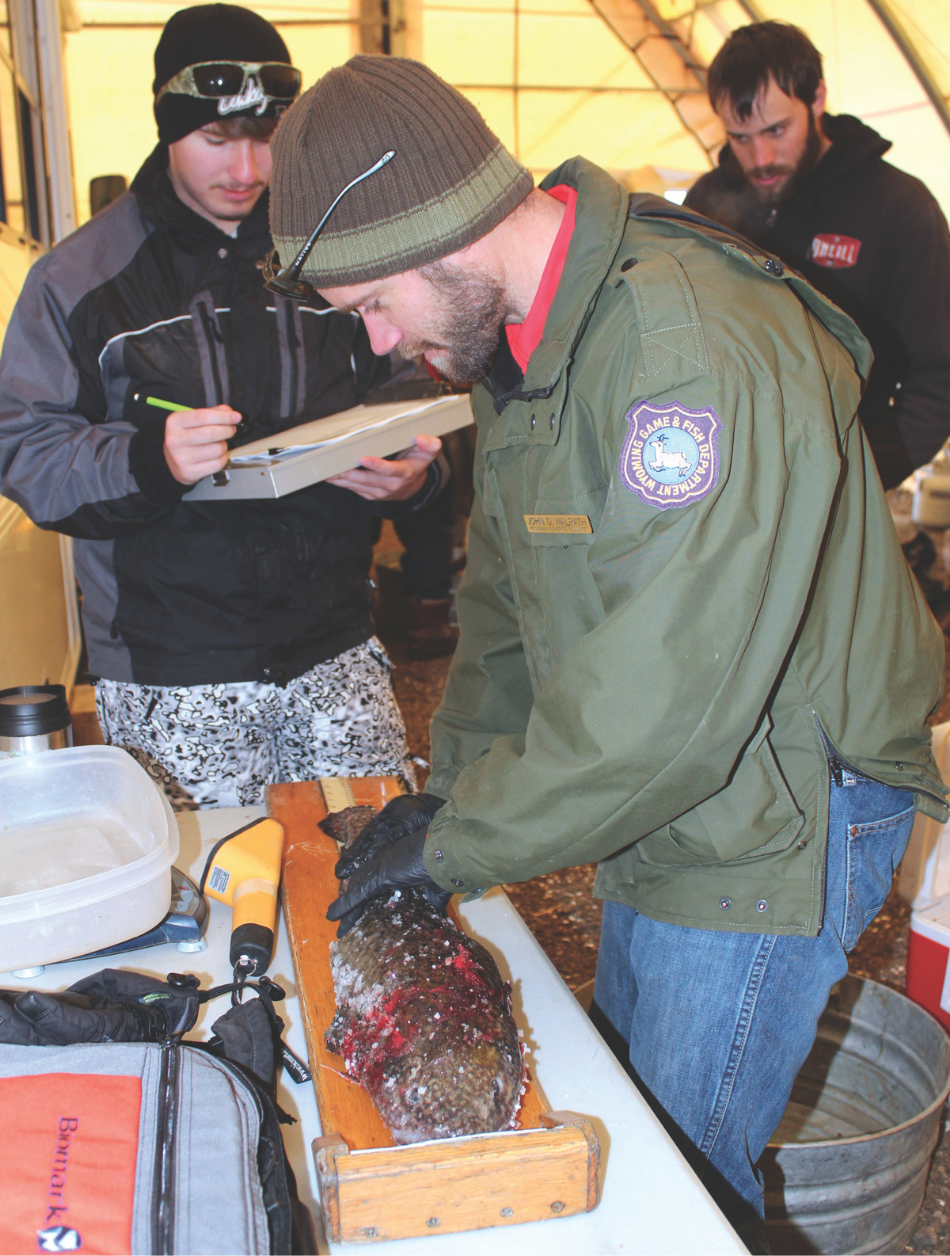
Wyoming Game and Fish Department Fisheries Biologist John Walrath measures a burbot from a recent Burbot Bash at Flaming Gorge Reservoir. (WGFD photo)
Although burbot will always be found in Flaming Gorge and Fontenelle reservoirs, efforts by Game and Fish and these derbies have helped reduce burbot numbers and aided in the rebound of other aquatic species impacted by burbot.
BURBOT IMPACTS
Keith said the most notable impacts to the Flaming Gorge and Fontenelle fisheries took a few years to notice because the burbot population in the reservoirs grew exponentially in the background before their presence was known by Game and Fish.
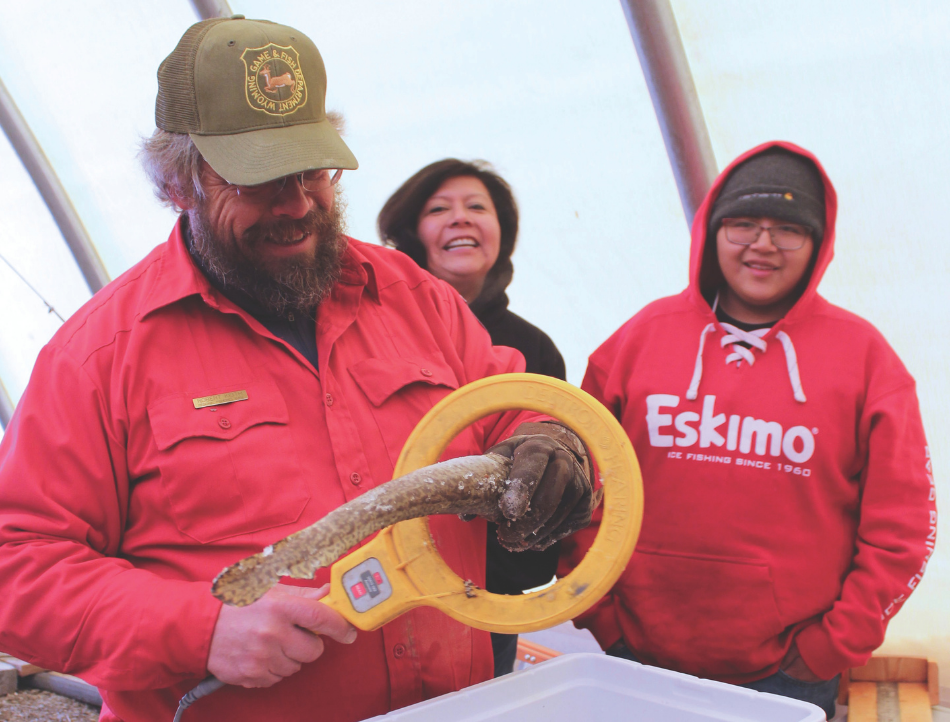
Robb Keith was the long-time fisheries supervisor for the Wyoming Game and Fish Department in the Green River Region and has done a lot of work to reduce the number of burbot in Flaming Gorge and Fontenelle reservoirs. (WGFD photo)
“We found them as their population exploded, and impacts were realized a few years later,” Keith said.
Smallmouth bass took the biggest hit. Flaming Gorge had a reputation as a quality smallmouth bass fishery prior to the burbot. The state record of 5.94 pounds was caught at Flaming Gorge in April 2003.
“A few years after detecting burbot in Flaming Gorge the majority of the smallmouth on the Wyoming side of the reservoir less than 12 inches long were extirpated,” Keith said.
Keith added crayfish suffered the same fate by 2010. Crayfish are critical forage for smallmouth bass, along with stocked trout and smaller lake trout.
Smallmouth bass and crayfish saw similar declines in Fontenelle and crayfish declined in Big Sandy Reservoir — places where burbot were illegally introduced. Keith added crayfish were all but extirpated from Big Sandy Reservoir due to the uncontrolled numbers of burbot.
Trout and kokanee salmon are the most sought-after species at Flaming Gorge, and have been for quite some time. Keith said Game and Fish hasn’t detected population impacts of burbot on trout and kokanee, but added department personnel have documented “countless numbers” of trout and salmon in burbot stomachs over the years.
DERBY DELIGHT
Events like the Burbot Bash at Flaming Gorge and the Ding-the-Ling event at Fontenelle every winter have helped reduce burbot numbers in those reservoirs.
At Flaming Gorge, 49,984 burbot have been removed from 2011-25 by Burbot Bash participants. Combined with other smaller derbies at the reservoir, 64,634 burbot have been caught as a result of these derbies since 2010.
The Ding-the-Ling derby has been held every year except one since 2016, and anglers have removed 6,316 burbot since 2016.
Keith said the number of burbot harvested during the Burbot Bash is down in recent years, but added the total catch is heavily influenced by the number of participants and the quality of ice. The number of burbot caught per participant each year suggests a stronger dip in burbot numbers. That and department netting indicates burbot numbers in the reservoir are down.
“The big burbot that were common during the early years of the contest are becoming more rare, which suggests angling pressure, including during the contests, is helping to crop off the older fish in the population,” Keith said.
The picture is not as clear with the Ding-the-Ling derby at Fontenelle. The contest and the number of participants is much smaller than the Burbot Bash. Access to the reservoir also can vary each year. For example, 2023 was snowy and access to the reservoir was limited. The 159 participants caught 227 burbot. In 2024, access was good and the 179 participants caught 1,212 burbot. This year access was good, ice was good and the 150 participants entered 1,236 burbot. That was the best catch rate during the Ding-the-Ling since its inception, with an average of 8.2 burbot per participant during the contest.
PROGRESS
Keith said burbot numbers in Flaming Gorge have been on a steady and slow decline in recent years. During the same time period , there has been a slight increase in smallmouth bass numbers and a substantial increase in crayfish on the Wyoming side of the reservoir.
“It is too early to celebrate, but these trends are encouraging,” Keith said.
Game and Fish monitors burbot numbers in Flaming Gorge and Fontenelle with trammel netting in the fall. Trammel nets are made of multiple layers of netting with a small layer between two larger layers. Over the last two years, the catch rate for burbot in Flaming Gorge has been at its lowest since Game and Fish began trammel netting at the reservoir in 2006. For the last three years, the catch rate for burbot in the Inflow Region of the reservoir has been below the one fish per hour objective for the reservoir. Prior to 2022 the catch rates mostly ranged between 1.5-2.0 fish per hour with a peak catch rate of 3.5 fish per hour in 2009.
Keith said the number of burbot caught per hour at Fontenelle Reservoir through trammel netting has been relatively stable since 2011. Keith said the catch rates have been much lower than the peaks observed at Flaming Gorge. Since netting began at Fontenelle catch rates have hovered around the objective of one fish per hour. Some years the rates were one-quarter fish per hour higher and some years one-quarter per hour lower. This could be because the reservoir experiences a significant drawdown every winter. Only 30 percent of the reservoir’s capacity remains by the end of March each year. The drawdowns are likely leaving burbot eggs deposited in near-shore spawning habitat during late December high and dry by the end of winter.
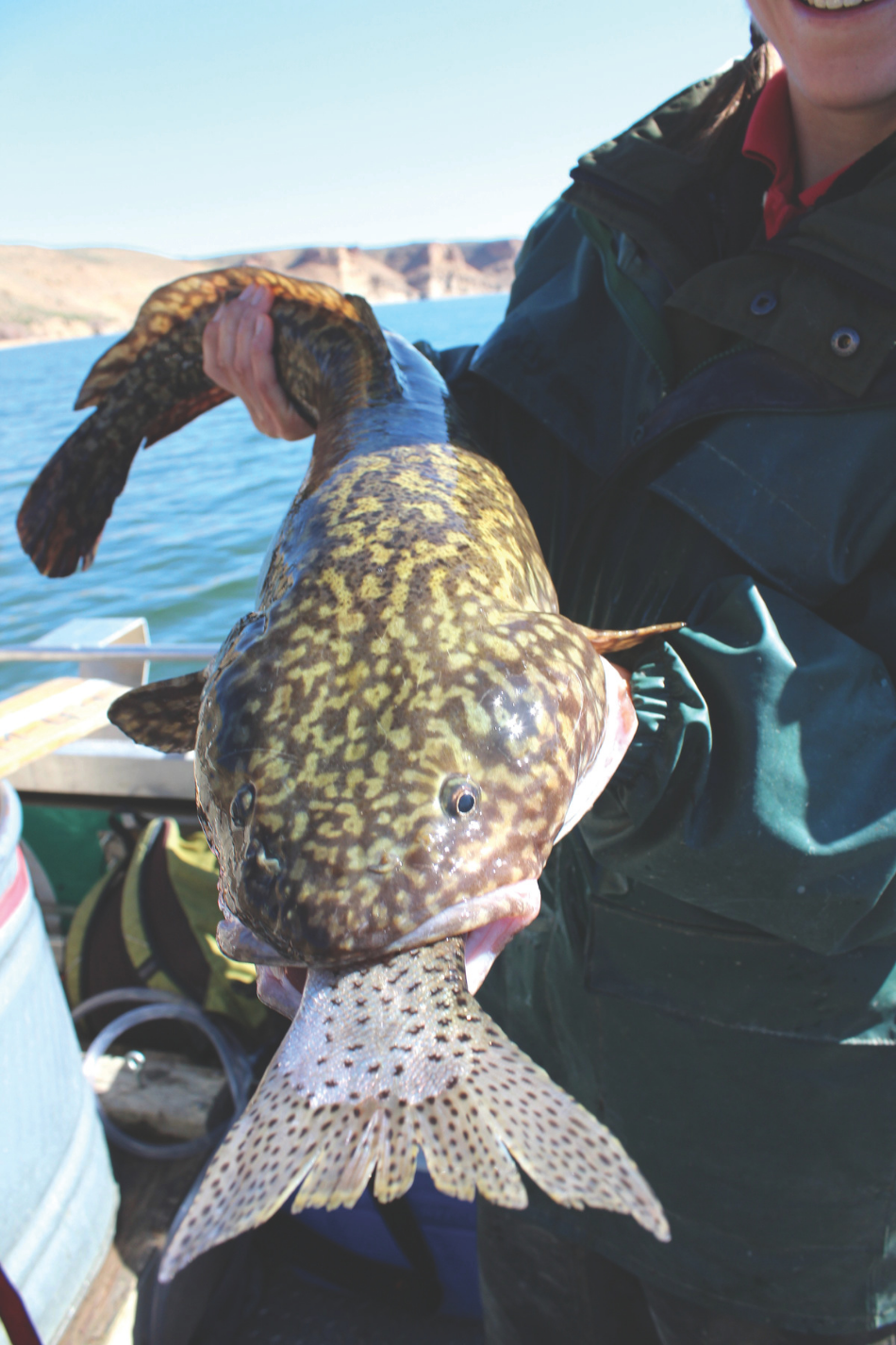
This burbot was captured trying to eat a good-sized rainbow trout at Flaming Gorge Reservoir. (WGFD photo)
FUTURE
“At some population level, burbot will always exist in Flaming Gorge and Fontenelle reservoirs,” Keith said. “The derbies will persist as long as there are great sponsors like the Flaming Gorge Chamber of Commerce and the LaBarge Events Committee sponsoring the derbies. Game and Fish provides help and guidance as necessary, such as tagging fish and helping check in fish during the events, but the sponsors do the heavy lifting. I do not envision the contest going away due to decreased numbers of burbot.”
Thanks to outreach by the management agencies and the derbies, burbot have become a popular fish to pursue for some anglers — and not just when there is ice on the reservoirs.
“Anglers target burbot at both reservoirs much of the year,” Keith said. “Ice fishing is most popular but anglers target the prespawn burbot at Flaming Gorge in the Green River and Blacks Fork arms from about mid-October through mid-to-late November — whenever ice eliminates boat access. Some people target burbot other times of the year from boats. Often, first-time burbot anglers sign up for a derby for fun, fame or fortune and keep returning to fish Flaming Gorge or Fontenelle because they enjoy fishing for and eating burbot.”
— Robert Gagliardi is the associate editor of Wyoming Wildlife magazine.

